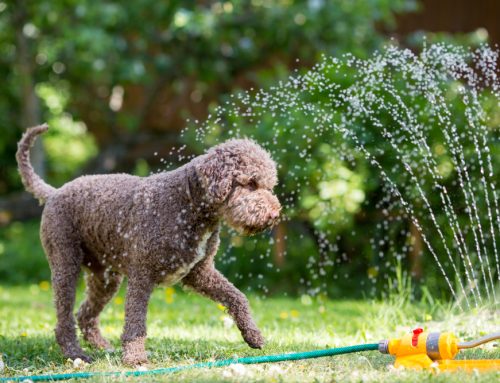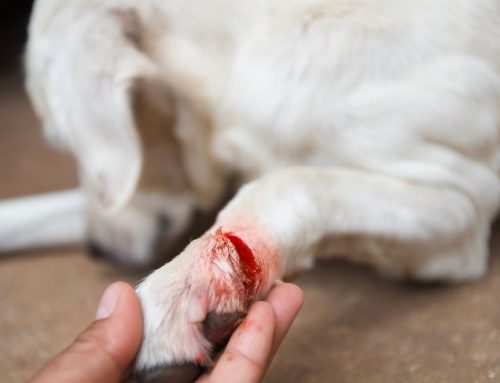There are endless ways to enjoy the long, hot, dog days of summer with your four-legged friends. From hiking to swimming to just lounging around, nothing compares to summer fun with your pooch. But, our pets, like people, are susceptible to heat-related afflictions—in fact, our pets are more vulnerable to the heat, so pet owners must be mindful of important heat-related facts and tips.
Head to the veterinarian
Rising temperatures also bring about rising rates of certain infectious diseases, especially those associated with ticks, mosquitoes, and other parasites. Make an appointment with our team to discuss heat safety and get flea, tick, and heartworm preventives on board, if you have not used them year-round.
Watch for signs of heatstroke in your pet
Even the healthiest of pets is vulnerable to the heat. Heatstroke is a serious condition that occurs when your pet’s body overheats, and can cause organ shutdown and cardiac arrest if not treated early enough. While animals typically have a few sweat glands in their paws, they mainly dissipate excess heat by panting, not by sweating like humans, which makes them more prone to overheating. In addition, some animals, such as geriatric and overweight pets and “flat-faced” breeds, such as pugs, bulldogs, and Persian cats, are more vulnerable to the heat. Signs of heat exhaustion are relatively easy to spot, so long as we frequently monitor our pets. Look for the following signs:
- Panting
- Open-mouth breathing, in cats
- Red or injected gums
- Body temperature higher than 104 degrees
- Vomiting
- Diarrhea
- Unwillingness to move
- Stupor
- Ataxia
Should you notice any of these signs in your pet, call us immediately or head to your nearest veterinary emergency clinic. Early intervention is critical when heatstroke is suspected.
Never, ever leave your pet in a parked car
The interior of a car can reach 110 degrees in 20 minutes on an 80-degree day. Cracking the windows will not provide any relief for your pet. If you are planning an outing in the car on a hot day, leave your pet at home. The American Veterinary Medical Association has more information regarding pets in vehicles with a chart demonstrating the interior temperature of a car over time.
Find your pet a shady spot
Given that our pets are so heat-sensitive, pet owners must be vigilant and always ensure pets have a safe, shaded, cool place to rest when they are outdoors. Remember that shady spots change throughout the day, so routinely check your pet’s designated area. If you are considering going hiking with your pet, try to find a wooded trail that offers plenty of tree cover. All pets should have unlimited access to fresh, cool water. Ensure you have enough for both you and your furry friend.
Pets can get sunburn, too

Any exposed skin is prone to sunburn, also known as solar dermatitis. While most pets are covered with a protective layer of fur, areas such as the nose, ear tips, muzzle, eyelids, and belly generally have less hair and can be burned, as can dogs with lighter-colored fur or thinner coats. Some hairless breeds, such as the Chinese crested or sphynx cat, are particularly susceptible to the sun. It is especially important to keep these pets out of the sun as much as possible. Sunscreen is an option for some animals; however, some products contain zinc, which can be toxic if ingested in large amounts. Consult with our team to see if sunscreen is a good option for your pet.
We encourage you to get out with your furry friend and safely enjoy the wonderful, warm days of summer. Don’t hesitate to contact us with any questions about how to keep your pet safe in the heat.








Leave A Comment